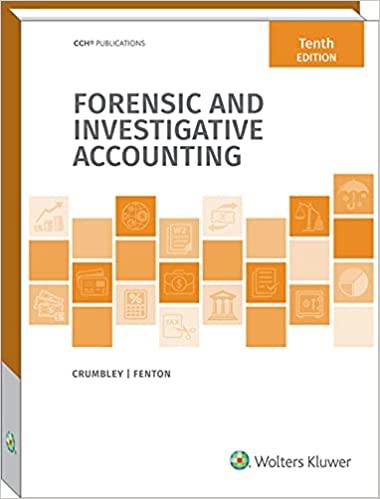Question
A company follows IFRS, and chooses to report certain intangible assets at fair value. On January 1, 2016, it acquires software for 400,000. Estimated life
A company follows IFRS, and chooses to report certain intangible assets at fair value. On January 1, 2016, it acquires software for 400,000. Estimated life is 4 years, straight-line. On December 31, 2016, the intangible has a fair value of 420,000. On December 31, 2017, its fair value is 380,000. How is this information reported on the 2017 financial statements?
| A. | Amortization expense 100,000; other comprehensive loss 40,000 | |
| B. | Amortization expense 100,000; other comprehensive income 180,000 | |
| C. | Amortization expense 140,000; other comprehensive income 100,000 | |
| D. | Amortization expense 140,000; other comprehensive loss 200,000 |
A subsidiary has previously unreported brand names valued at $50 million at the date of acquisition. The brand names have an indefinite life. It is now the end of the second year since acquisition, and you are consolidating the accounts. The subsidiary still owns the brand names. Impairment testing reveals that the brand names were impaired by $5 million in the first year and $7 million in the second year. The amount by which the brand names are recognized in eliminating entry (R) is:
| A. | $45 million | |
| B. | None since the brand names have an indefinite life | |
| C. | $38 million | |
| D. | $50 million |
On consolidated financial statements, where does the subsidiarys treasury stock balance appear?
| A. | Doesn't appear on the consolidated financial statements | |
| B. | On the consolidated statement of changes in stockholders equity | |
| C. | On the consolidated balance sheet, as an asset account | |
| D. | On the consolidated balance sheet, as an equity account |
How does the complete equity method, used to facilitate consolidation in subsequent years, differ from the equity method used for external reporting?
| A. | The complete equity method deducts unconfirmed profits on downstream sales to the extent of ownership interests, while the equity method used for external reporting deducts all unconfirmed profits on downstream sales. | |
| B. | The complete equity method adjusts for upstream and downstream unconfirmed profits, while the equity method used for external reporting does not make these adjustments. | |
| C. | The complete equity method adjusts reported income for impairment losses on previously unreported intangible assets, while the equity method used for external reporting does not. | |
| D. | The complete equity method deducts unconfirmed profits on upstream sales to the extent of ownership interests, while the equity method used for external reporting deducts all unconfirmed profits on upstream sales. |
Step by Step Solution
There are 3 Steps involved in it
Step: 1

Get Instant Access to Expert-Tailored Solutions
See step-by-step solutions with expert insights and AI powered tools for academic success
Step: 2

Step: 3

Ace Your Homework with AI
Get the answers you need in no time with our AI-driven, step-by-step assistance
Get Started


